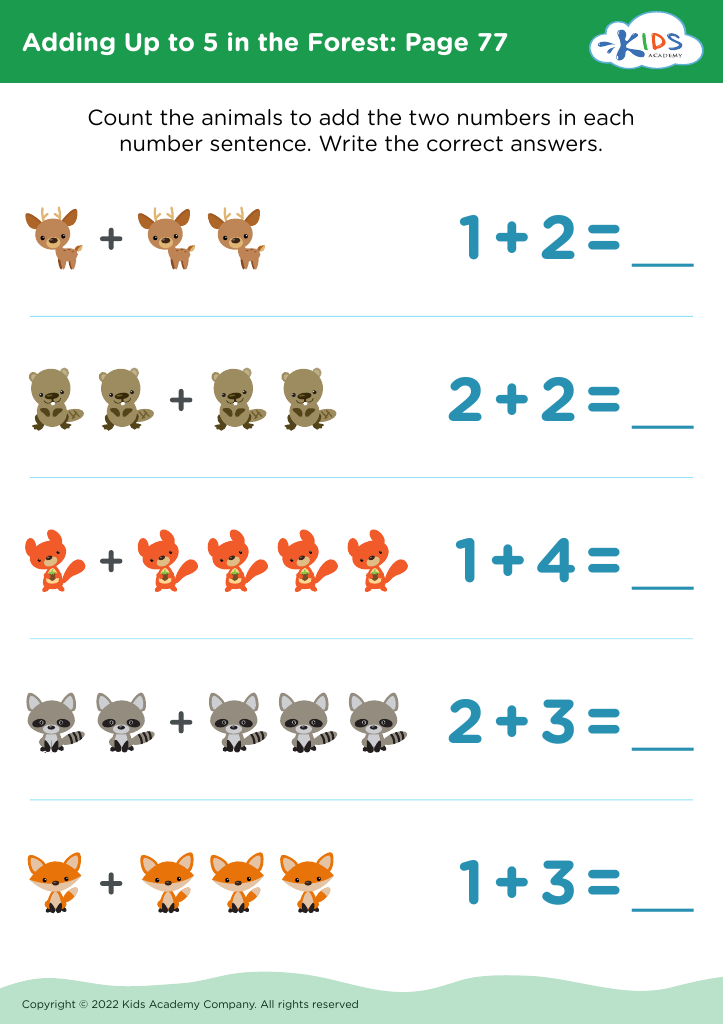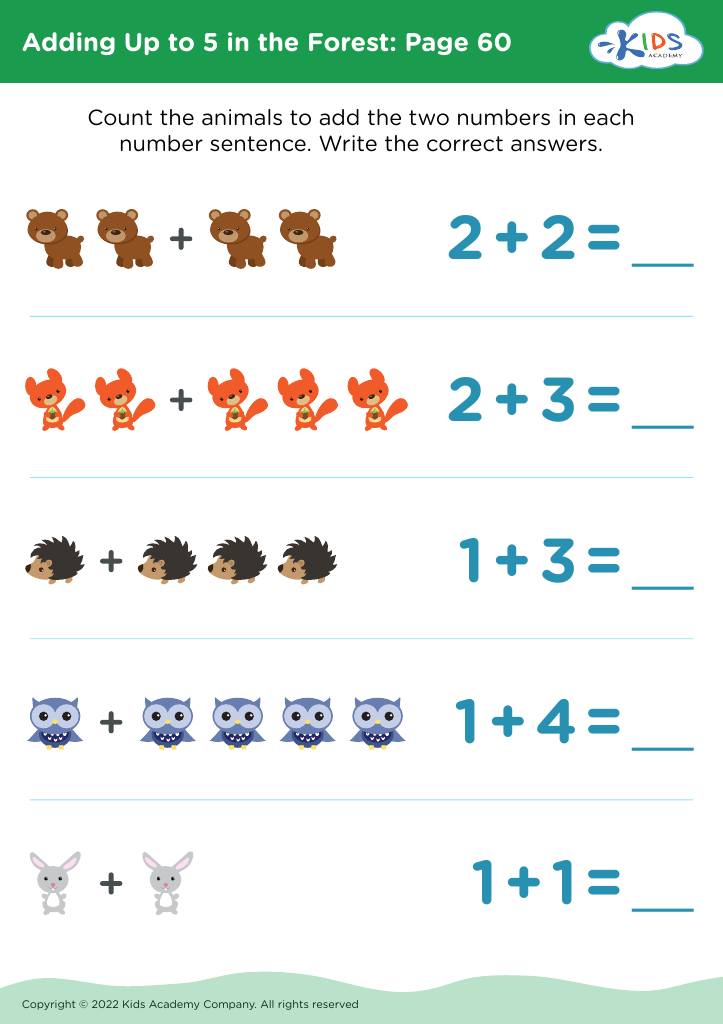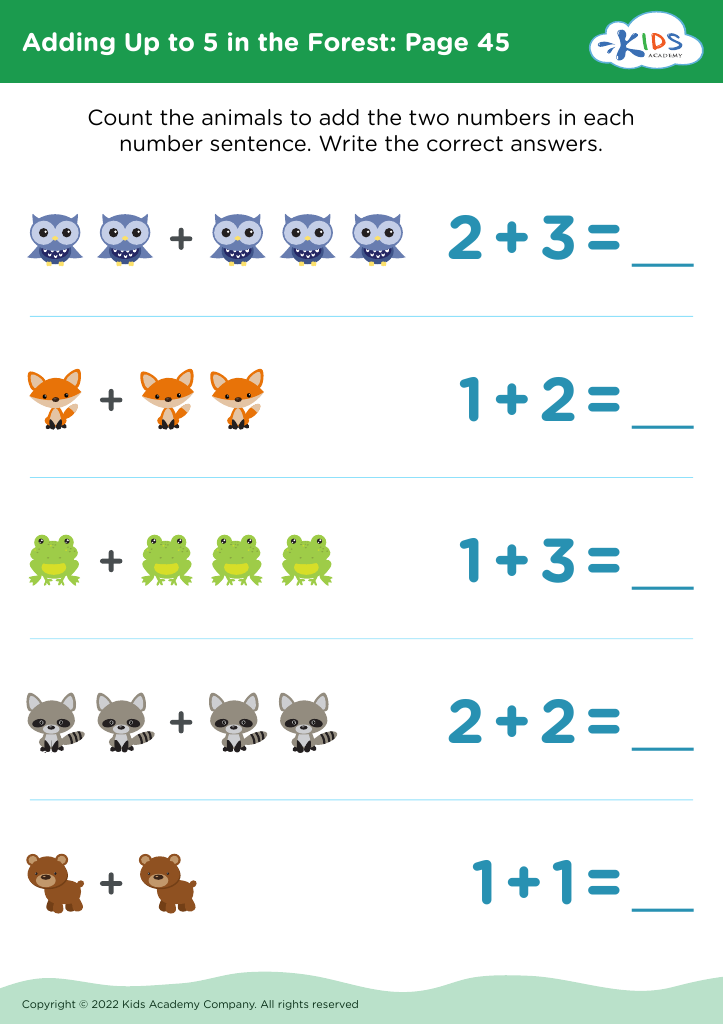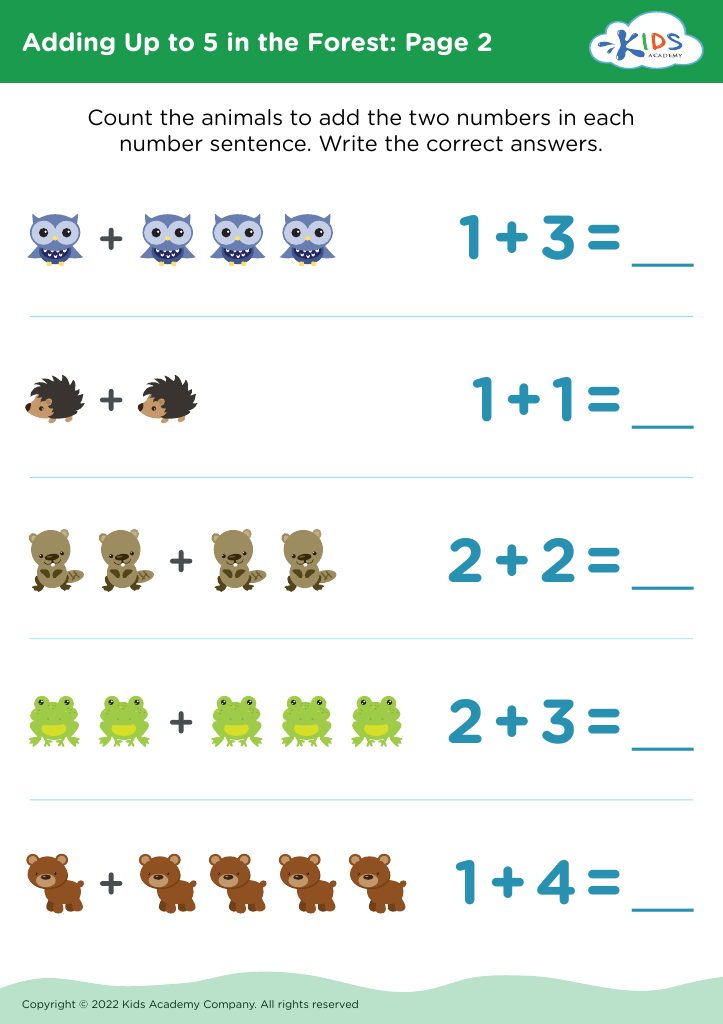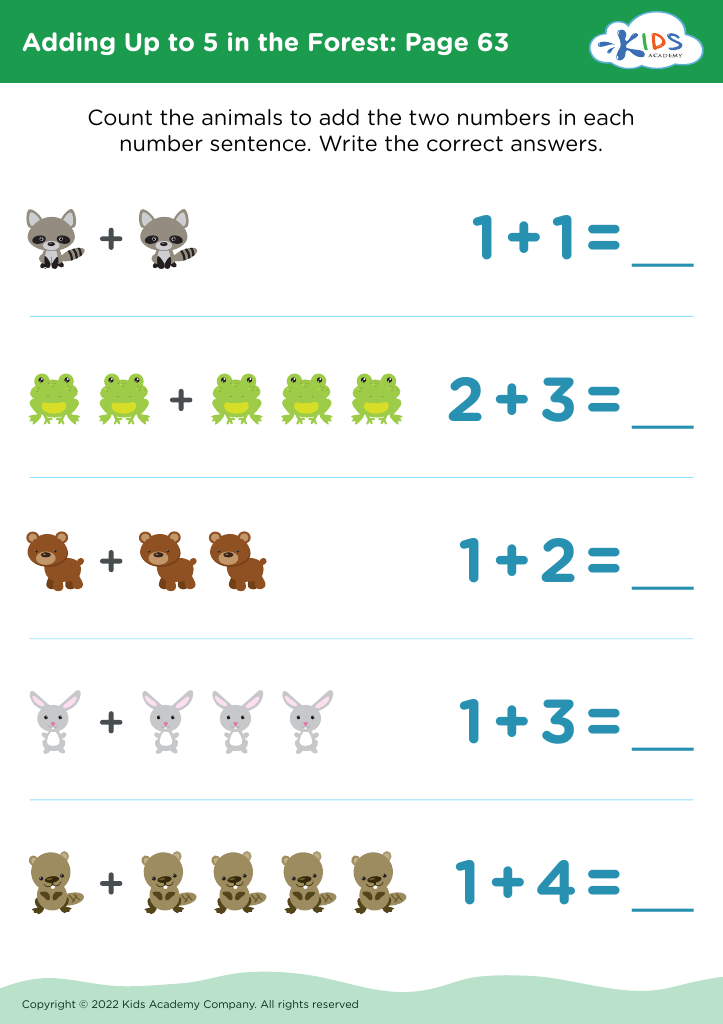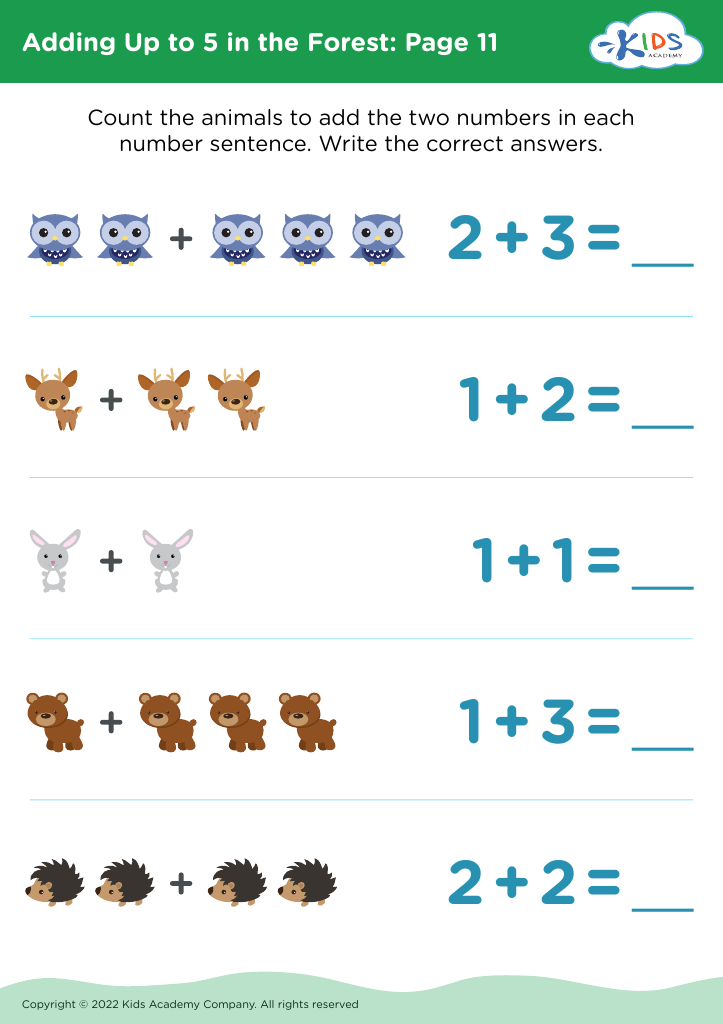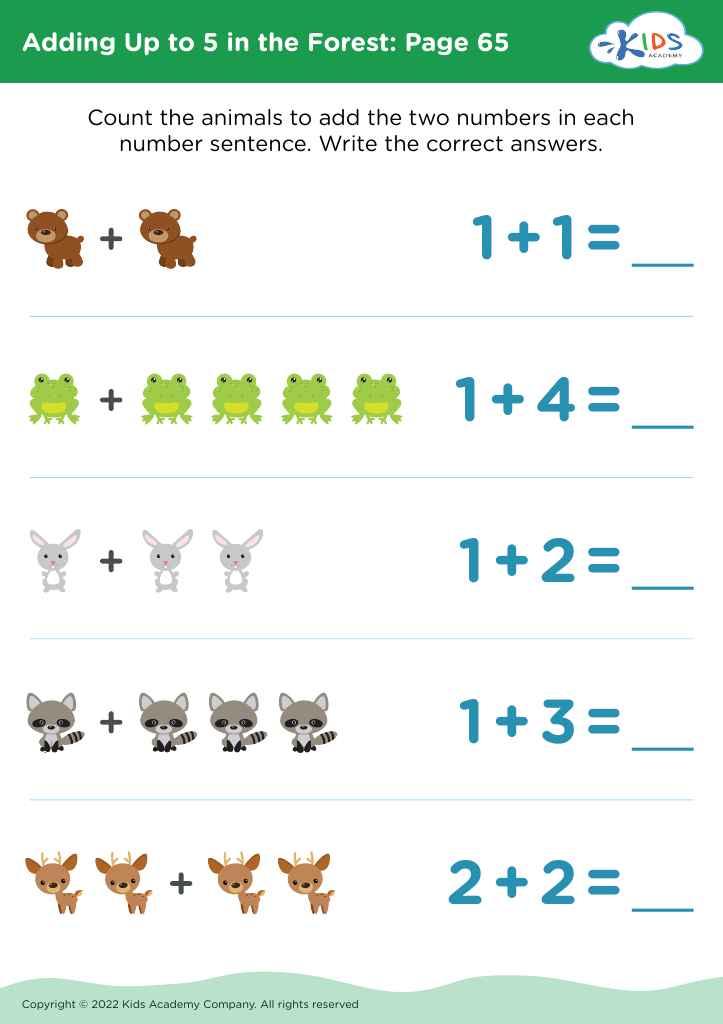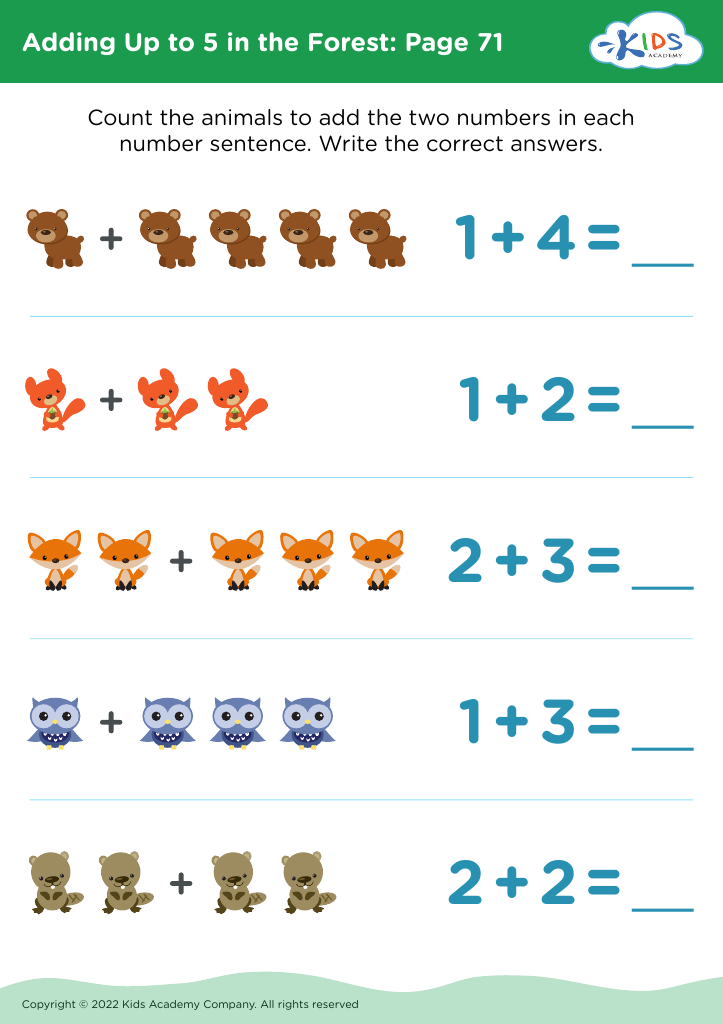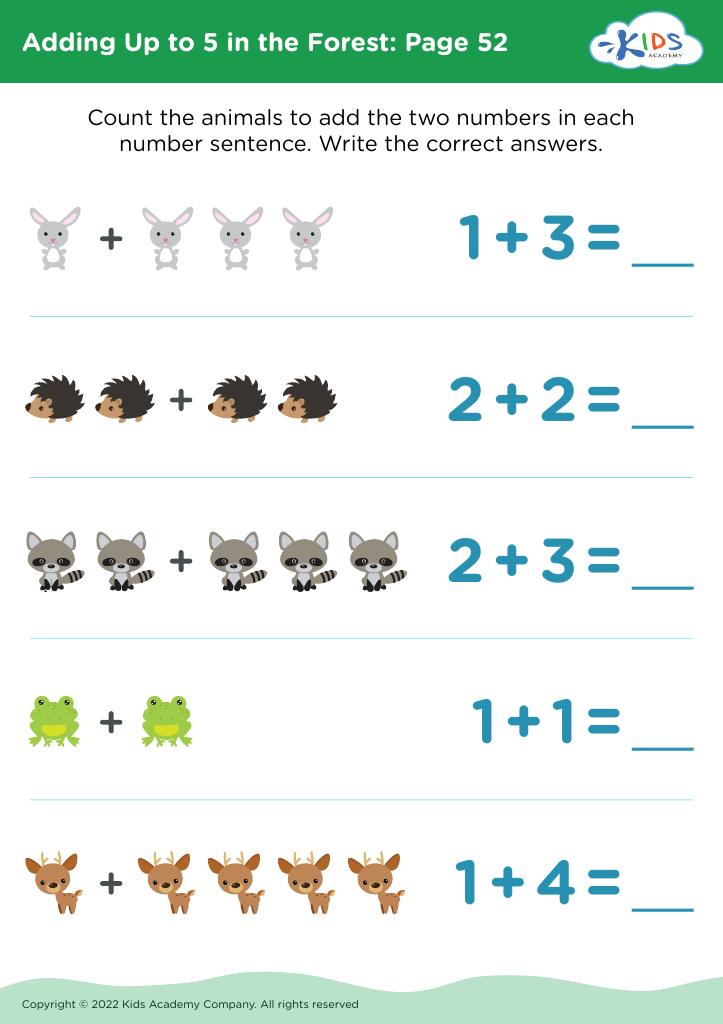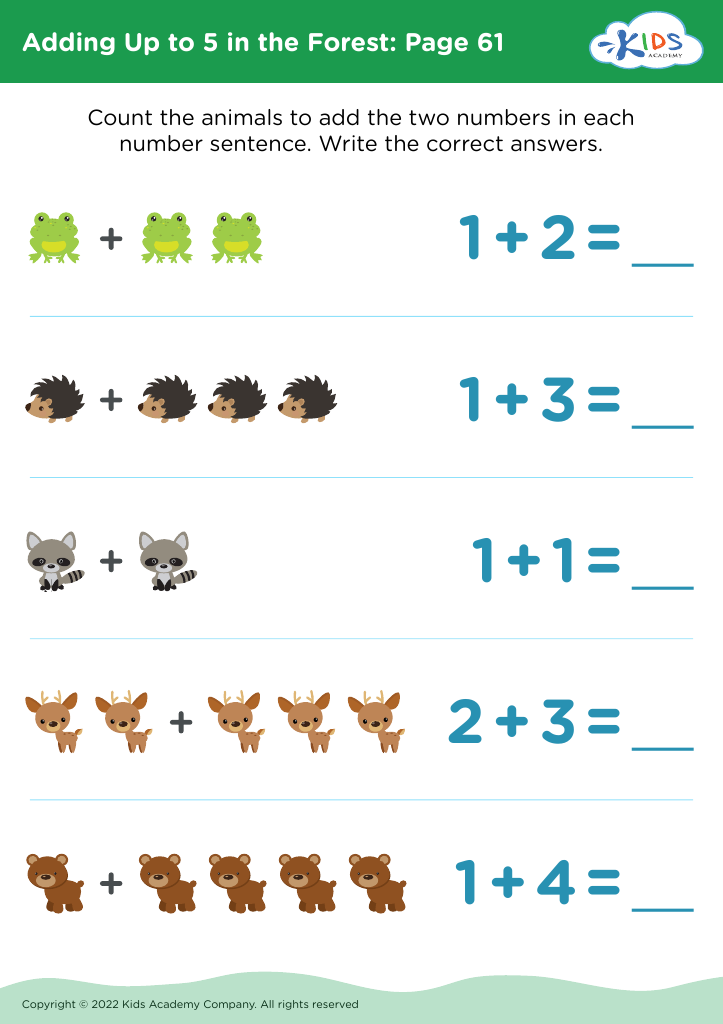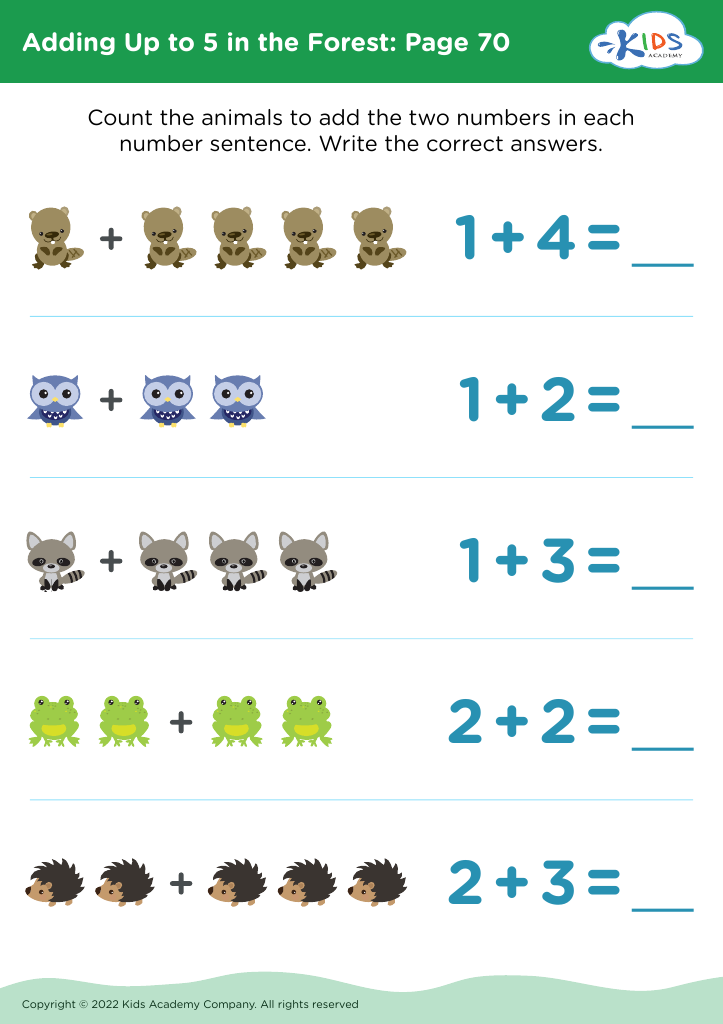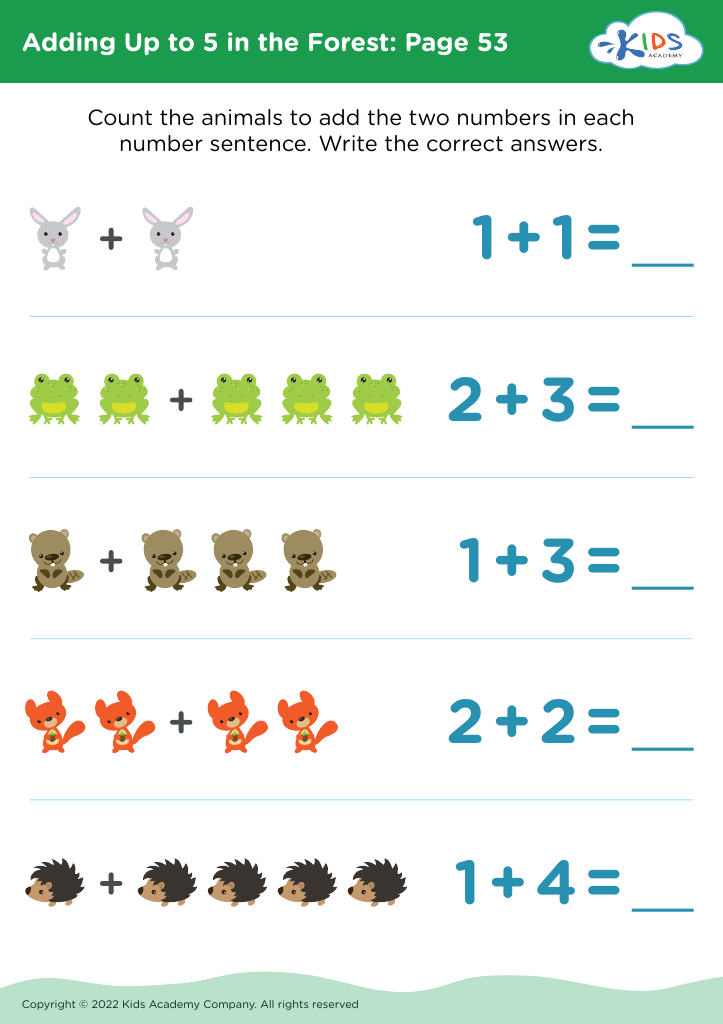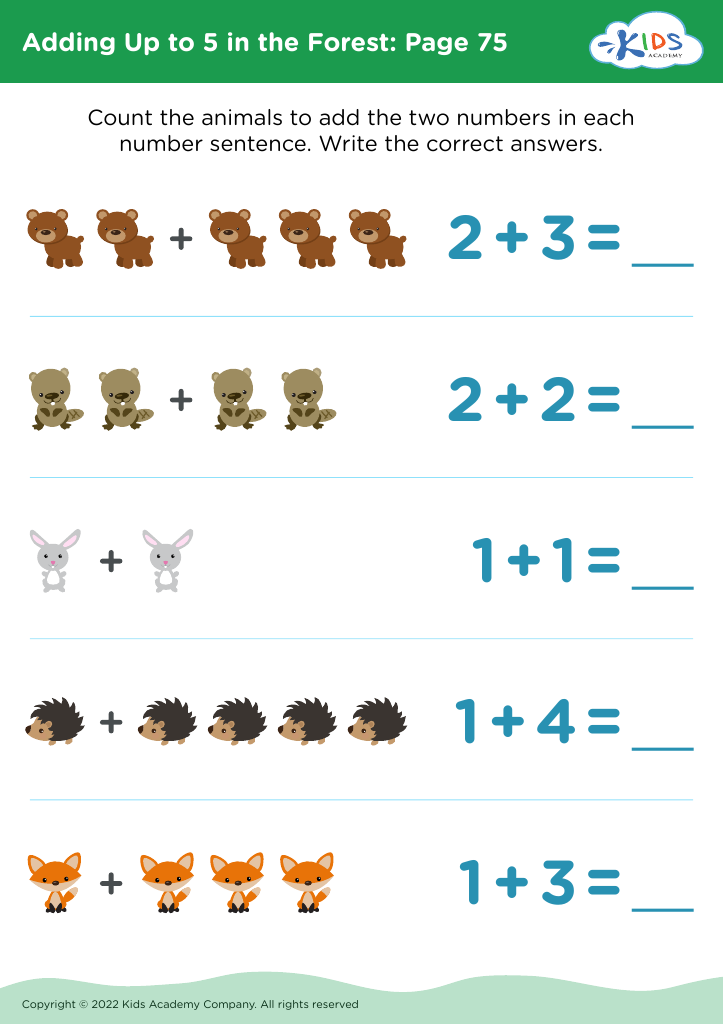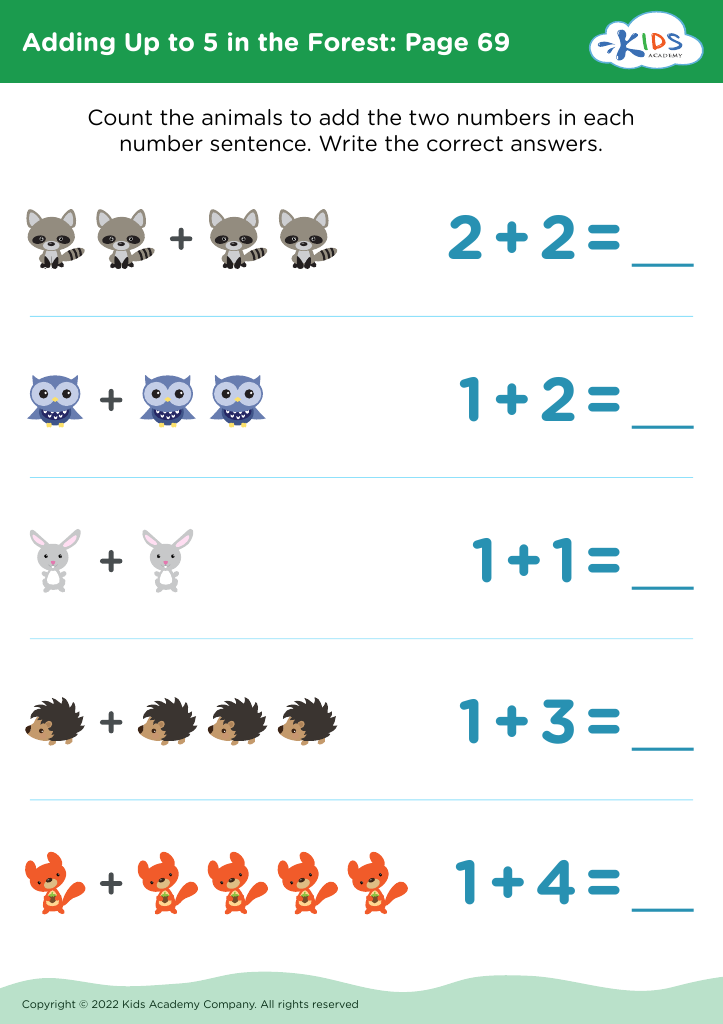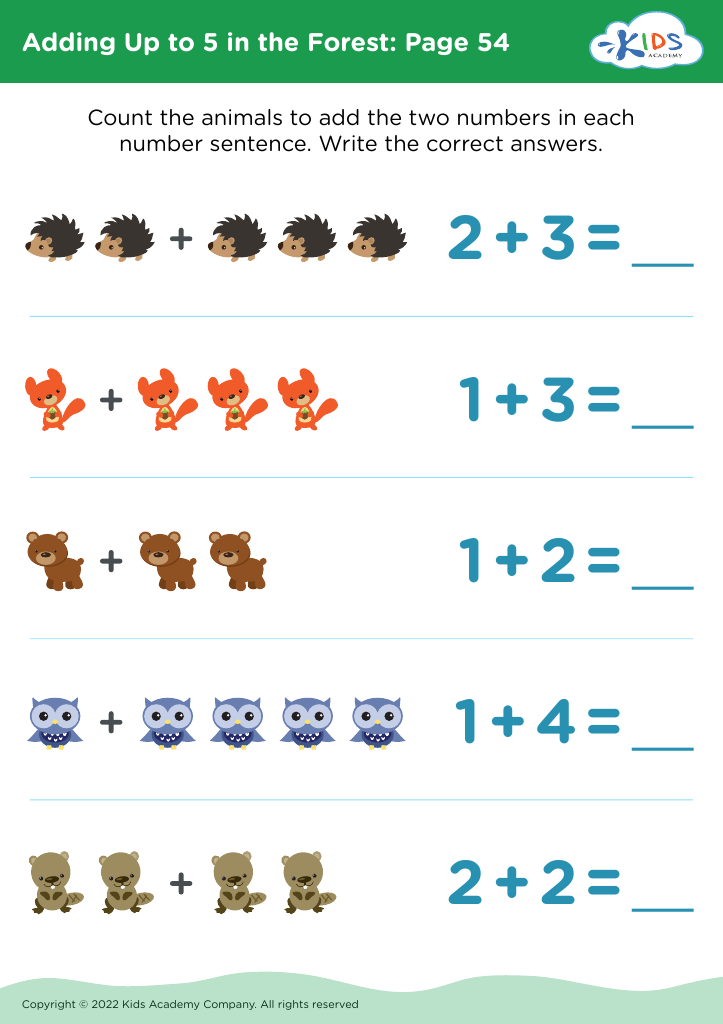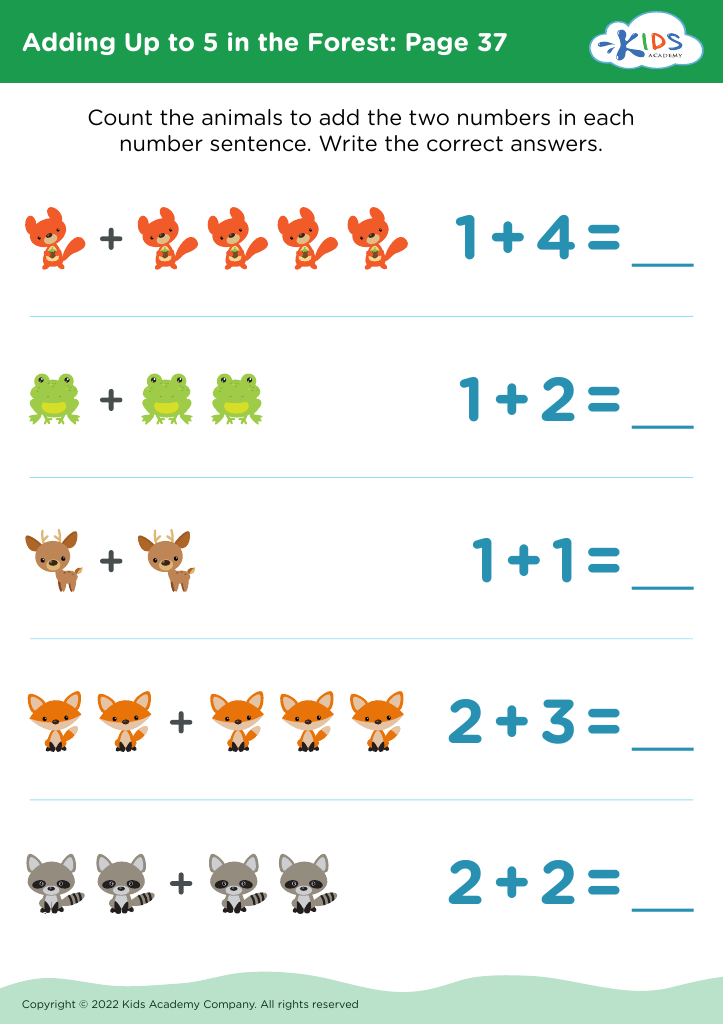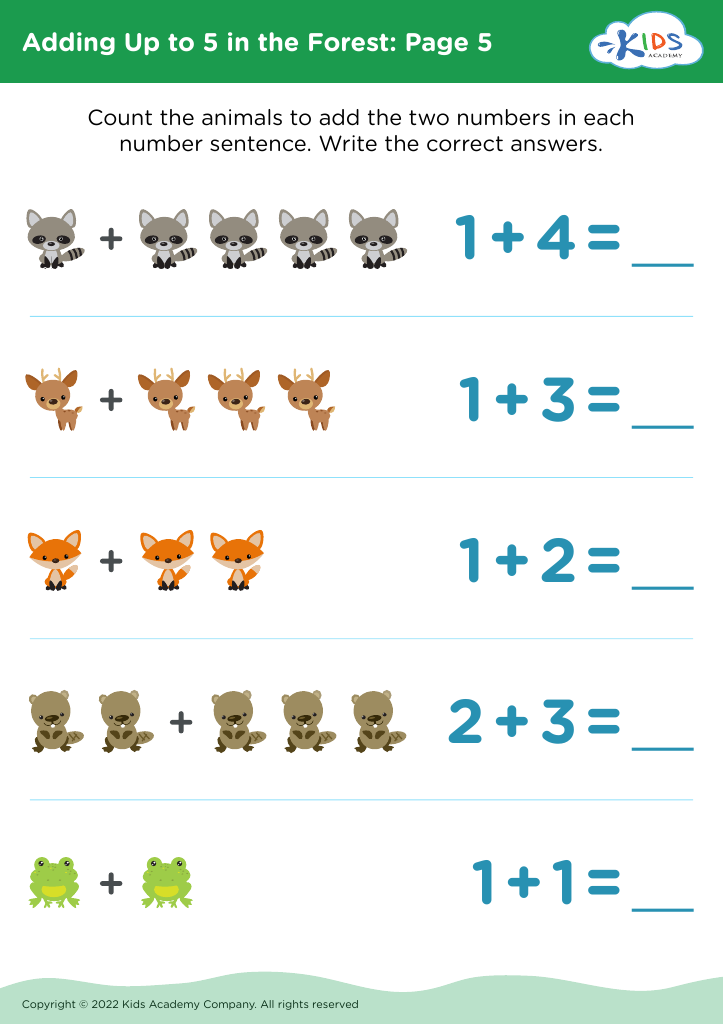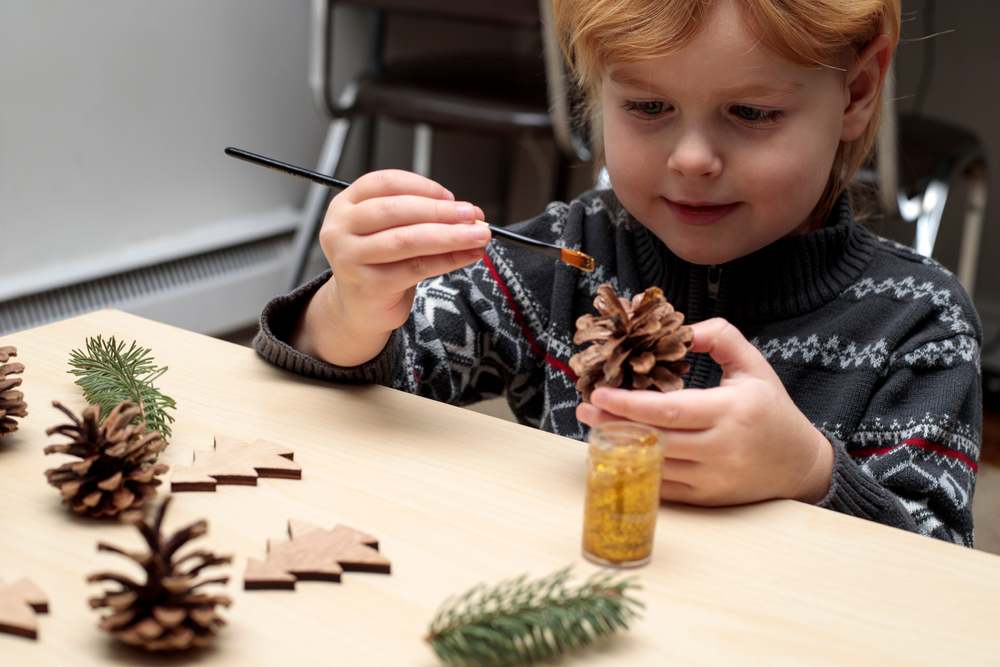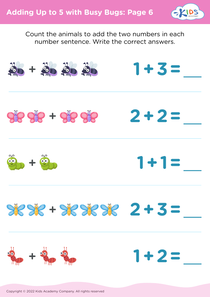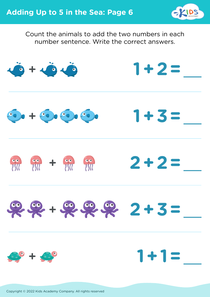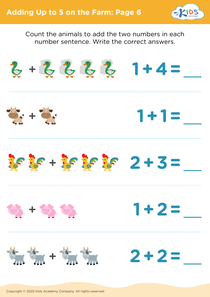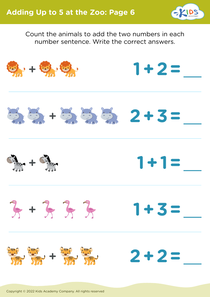Cognitive Development Adding in the Forest Worksheets for Ages 4-5
17 filtered results
-
From - To
Discover our "Cognitive Development Adding in the Forest Worksheets" designed specifically for children aged 4-5! These engaging worksheets combine playful forest themes with essential math skills, allowing young learners to develop their addition skills while exploring nature. Through vibrant illustrations and creative activities, children will focus on key concepts such as number recognition, counting, and simple addition. This interactive resource fosters cognitive growth, enhancing problem-solving abilities and critical thinking through fun, nature-inspired scenarios. Perfect for both classroom and home learning, our worksheets encourage curiosity and a love for math in early learners, setting a strong foundation for future academic success!
Cognitive development in early childhood, particularly for children aged 4-5, plays a crucial role in shaping their learning processes and overall growth. Parents and teachers should be particularly attentive to this aspect of development, as it lays the foundation for critical thinking, problem-solving, and language skills. Engaging children in learning activities within a forest setting can foster these cognitive abilities in a unique way.
Nature stimulates curiosity and encourages observational skills. When children explore the forest, they encounter diverse plants, animals, and ecosystems. This hands-on experience cultivates their ability to ask questions, make predictions, and learn through discovery, enhancing their critical thinking skills. Furthermore, the forest provides an unstructured environment where children can engage in imaginative play, promoting creativity and social interactions as they collaborate on exploratory tasks.
Additionally, forest activities can reinforce language development as children describe their discoveries, learn new vocabulary about nature, and share ideas with peers. The natural setting also encourages resilience and adaptability, teaching children how to navigate challenges and learn from their experiences. By prioritizing cognitive development in these settings, parents and teachers can nurture well-rounded, inquisitive learners prepared for future academic success.

